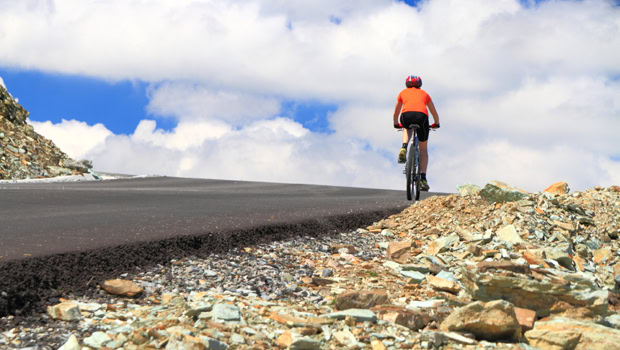
Blood, Sweat, and Diabetes
The time has come. I want to be accountable, so I’m telling you about my goal. I’m going to ride a 100 mile Tour de Cure bike ride for the American Diabetes Association in June 2014. Mark that down.
Goals drive me to stay healthy. When I was 30, my A1C was almost 12.8, so I set a goal to get it under control. I went on an insulin pump and started exercising with a personal trainer. In 6 months, I got my A1C to a normal range, and I learned first-hand about the power of having a wellness plan for diabetes. For me, such a plan includes having an athletic goal which gives me something physically active to accomplish.
Over the years I’ve had all sorts of athletic goals, including riding 400 miles across Colorado and doing a Half Ironman triathlon in Texas, but this newest goal is special. I haven’t committed myself to a big endurance event since I was diagnosed with cancer for the second time in July 2010. It might seem like I would have enough on my plate, but I am happiest and healthiest when I have a clear goal ahead of me, so I’m taking a deep breath and making plans to do 18 weeks of training to get ready.
The first part of any athletic training is referred to as the base, for baseline. In this phase, I work on building my slow twitch muscles, which help with endurance. I do this by riding in a zone that keeps my pedaling heart rate always under 75% of my maximum heart rate. Doing this allows my heart to become more efficient and it teaches my body how to conserve glycogen stores within the muscles and vital organs. Base training also increases the efficiency of my respiratory system by increasing the number and complexity of vascular capillaries transporting oxygen-rich blood to the working muscles. Blood vessels become larger and more flexible, making it easier for the blood to flow. Over time this will make me stronger and faster, which I really like to be!
But it’s just as important for me to establish a diabetes base. To do this, I first check the age of my blood glucose meters. I am using the OneTouch Ping, and a OneTouch Mini. Both are under a year old and good to go. (It’s important to update meters at least every 2 years, for accuracy.) I also review how my body interacts with the insulin I use, which is Novolog. For me, it starts working within 15 to 20 minutes of taking it, peaks in about 90 minutes, and lasts in my system for about 4 hours. It’s critical for every athlete with diabetes to intimately understand the insulin you use, and to know that there can be slight variations from person to person. Knowing the actions of your insulin gives you important information about how much insulin on board (IOB) you have at any given time. During a long endurance event, such knowledge is power.
![]() Another important part of establishing my diabetes base is to do basal testing to make sure my basal rates are dialed in as I go deeper into my training. I’m starting overnight basal testing with my Animas insulin pump. To test if my current basal rates are accurate, I ate dinner at 5:30 PM and took a full bolus for the 50 grams of carbs I ate. I ate a dinner which I knew I would be able to accurately bolus. Then all evening, I watched my continuous glucose monitor to see if things held steady. Doing basal testing isn’t all that much fun, and I likely will need to do more than one night of it. And once I have my nighttime rates dialed in, I’ll have to work on testing my daytime basal rates.
Another important part of establishing my diabetes base is to do basal testing to make sure my basal rates are dialed in as I go deeper into my training. I’m starting overnight basal testing with my Animas insulin pump. To test if my current basal rates are accurate, I ate dinner at 5:30 PM and took a full bolus for the 50 grams of carbs I ate. I ate a dinner which I knew I would be able to accurately bolus. Then all evening, I watched my continuous glucose monitor to see if things held steady. Doing basal testing isn’t all that much fun, and I likely will need to do more than one night of it. And once I have my nighttime rates dialed in, I’ll have to work on testing my daytime basal rates.
It’s a slow process to get all this information, but just like the athletic base-building process, it’s worth it. Establishing a baseline will allow me to make more accurate basal adjustments as my fitness improves. This, in turn, will allow me to perform better on my training rides and on the official ride day. So it may be methodical, but it’s the best path forward towards meeting my goal.
Thanks for reading this Insulin Nation article. Want more Type 1 news? Subscribe here.
Have Type 2 diabetes or know someone who does? Try Type 2 Nation, our sister publication.